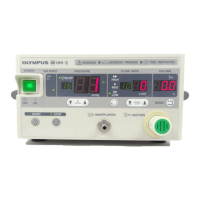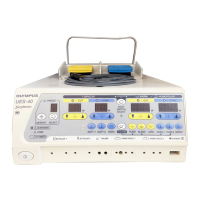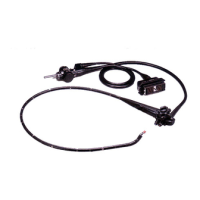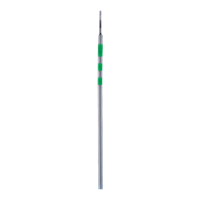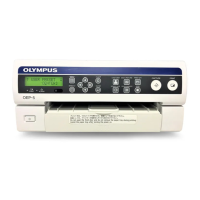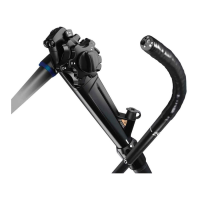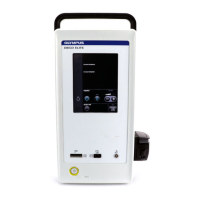Chapter 5 Operation
49
HIGH FLOW INSUFFLATION UNIT UHI-3
5.5 Smoke evacuation (optional foot switch [MH-317]
required)
The smoke evacuation function can exhaust fumes and mist generated in a body
cavity, while controlling insufflation and suction to maintain the abdominal
pressure.
• Always connect to a suction pump with a capacity of at least
40 L/min (at 0°C, 101.3 kPa) and adjust to −400 to
−300 mmHg.
• If the patient is a child whose abdominal cavity volume is
small, the abdominal pressure will fluctuate greatly. Do not
use the smoke evacuation function in such cases.
• If smoke evacuation continues for an extended period of
time, a large amount of CO
2
gas will be exchanged and the
patient’s body temperature may drop. Always prepare
temperature monitoring equipment and closely observe the
patient’s body temperature and other parameters. Also
observe the volume indicator to monitor the amount of CO
2
gas used during the operation.
• Confirm that the suction tube is securely attached. If the
suction tube becomes disconnected, CO
2
discharge will not
be possible. In this case, further supply of CO
2
gas will
increase the abdominal pressure.
• Connect the suction tube after the insufflation tube has been
connected. If only the suction tube is connected, smoke
evacuation and the automatic suction function will cause the
abdominal pressure to drop and the pressure cannot be
restored by insufflation.
• Never connect any other equipment to the foot switch
connector.
The table below shows the flow rate when smoke evacuation
is performed. Flow rate varies depending on the flow
resistance of the connected instrument. This table shows
flow rate when low-flow-resistance instruments are
connected to the insufflation tube. Accordingly, the actual
gas flow rate may not conform exactly to the figures in the
table.
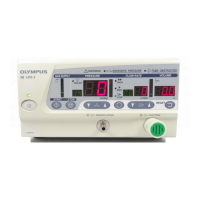
